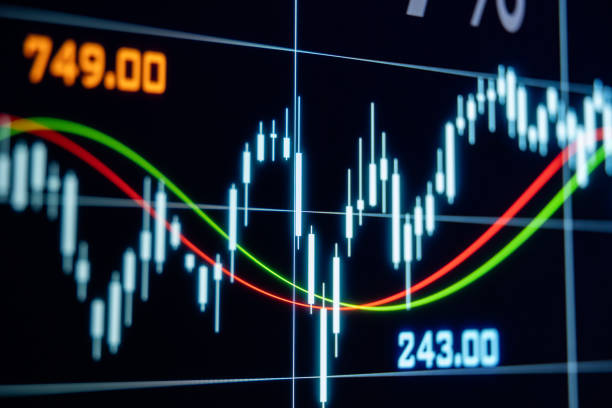The Bottom Line: DOL issues proposal to address ESG investment issues in retirement plans that reflects some superficial conclusions and fundamental misunderstanding regarding ESG investing.
Department of Labor issues proposal to address ESG investment issues in retirement plans
In a new proposal with a 30-day comment period issued by the Department of Labor (DOL) on June 22 that addresses ESG investment issues within the context of plans fiduciaries subject to the Employee Retirement Income Security Act of 1974, as amended (ERISA), the DOL is proposing higher thresholds for strategies relying on ESG integration and for other types of ESG investment strategies. At the same time, the proposed rule requires that defined contribution plans evaluate ESG investment options on the same basis as other investment options, which is reasonable, but would also prohibit the introduction of an ESG fund as or as a component of a Qualified Default Investment Alternative (QDIA) option. Finally, the DOL cautioned that “fiduciaries should also be skeptical of “ESG rating systems-” or any other rating system that seeks to measure, in whole or in part, the potential of an investment to achieve non-pecuniary goals-as a tool to select designated investment alternatives, or investments more generally.” A copy of the DOL proposal is available at https://www.dol.gov/sites/dolgov/files/ebsa/temporary-postings/financial-factors-in-selecting-plan-investments-proposed-rule.pdf
Related to the proposal, Eugene Scalia, the Secretary of Labor, penned an Op Ed in the Wall Street Journal on June 24 “Retirees’ Security Trumps Other Social Goals.” The article reflects some superficial conclusions and a fundamental misunderstanding regarding sustainable investing that conflates ESG integration for the purpose of properly evaluating investment risks and social or ethical investing practices to “do good while also doing well.” These undermine the credibility of the Department of Labor’s just issued proposal regarding the consideration of environmental, social and governance (ESG) factors in making investment decisions for pension plans.
Fact-Even as the elements of what constitute E, S and G are still being debated, ESG scores are evolving, and the definition of ESG integration has not been formalized, most practitioners agree the approach combines ESG data analysis with other investment considerations. A commonly accepted definition, in line with the CFA Institute’s definition, is that ESG integration takes into account, in a systematic and consistent manner, any relevant and material environmental, social and governance risks or opportunities when making investment decisions. The consideration of ESG factors in investment analysis is intended to complement and not substitute for traditional fundamental analysis that might otherwise ignore or overlook such risks or opportunities. On the other hand, values-based or social investing relies primarily on screening out or excluding companies from investment portfolios for a variety of reasons. These may include ethical, religious, social as well as other strongly held beliefs, such as environmental concerns or the involvement of companies in specific business activities, most commonly tobacco, alcohol or nuclear energy.
Fact-In the US, sustainable investing through mutual funds and ETFs has gained traction in the last 17-months, in particular, as sustainable fund assets ballooned from $380 billion at the start of 2019 to almost $2.6 trillion as of May 2020. Sustainable investing encapsulates at least five strategies, including values-based investing or social investing, exclusions, impact investing, thematic investing and ESG integration. These are not mutually exclusive. The growth in this sector of investing is not attributable to new investor money so much as the re-branding of existing funds. In the last year and five-months, almost $2 trillion in existing fund assets have been re-branded, accounting for 90% of the increase, as existing funds explicitly amended their prospectus to reflect the onboarding of sustainable investing strategies. For the most part, this has taken the form of ESG integration. Market movement and net new money, in that order, made up the difference. While individual investors express a desire in surveys to invest sustainably, they have not as yet begun to flock headlong into sustainable funds.
Ready To Gain A Competitive Edge? In-depth sustainable investment management analysis, research, opinions and sustainable fund ratings
Fact-Investment results which may suffer from strategies pursued by funds making investments “to further a particular environmental or social cause” should not be used to infer the outcomes that may be achieved by funds employing ESG integration strategies. Recently, it has been reported that a limited number of sustainable funds outperformed the market during the market rout between February and March of this year, in part due to favorable sector and stock selection. That said, this observation does not apply to the larger universe of actively managed sustainable funds. Moreover, near term results may not play out over the intermediate-to-long-term-the more relevant time horizons for the DOL in its deliberations and oversight responsibilities for retirement assets with their long-term obligations. Even though the near-term results of some sustainable funds is being heavily promoted by asset management firms and ESG data providers, it will take a longer interval covering multiple market cycles to reach more definitive conclusions on this topic. These are still early days, but a number of credible studies lend support to the promising conclusion that certain sustainable fund strategies experience performance no worse than the market’s and these may perhaps even produce lower downside volatility during market downturns.
In the case of plans that fall under the DOL’s jurisdiction with their long-term investment time horizons and, in the case of defined benefit plans, their liability profiles, ignoring, for example, environmental risks due to climate change that are projected to have greater impacts sooner, could potentially harm investment performance. As for defined benefit plans, ignoring such risks will potentially exacerbate their already weak financial condition due to underfunding.






